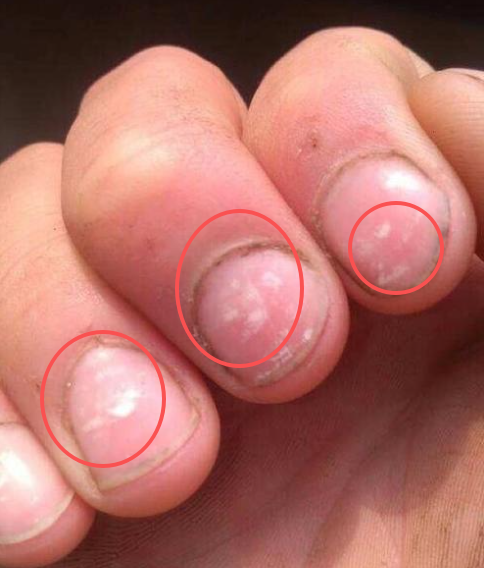
You’re trimming your nails or applying polish when you see them: small, bright white spots or lines against the pink nail bed. For generations, a common folktale has declared these “lie spots” or claimed they appear when someone tells a fib. It’s a charming story, but the real explanation from your body is far more practical.
If your nails have these white spots, it’s not because you’ve been dishonest. In the vast majority of cases, it’s because your body has experienced a minor, localized injury to the base of your nail, and the spot is simply the visible record of that trauma.
The medical term for this is Leukonychia.
The Real Story: A Bump, Not a Deficiency
The part of your nail that you can see is made of dead, hardened cells. But the story of the nail begins at the matrix—the hidden, living part under your cuticle. This is the nail’s “factory.” When this delicate matrix gets a minor bump, knock, or pinch—the kind you might not even remember—it can temporarily disrupt the process of keratinization (the hardening of nail cells).
The result is a tiny pocket of air or a small flaw in the nail plate that gets pushed forward as the nail grows out. What you see as a white spot is actually that imperfection in the nail’s structure. It’s the nail’s version of a bruise.
Why the “Calcium Deficiency” Myth Persists
It’s a very common belief that white spots mean you’re low on calcium. While calcium is vital for strong bones, it plays a much smaller role in the health of your nails and hair. Your nails are primarily made of a protein called keratin. A true, severe protein deficiency can affect nails, but it causes much broader problems, like overall weakness and horizontal ridges (Beau’s lines), not isolated white spots.
When to Pay Closer Attention (The Rare Exceptions)
While trauma is the cause 99% of the time, in very rare instances, widespread or patterned leukonychia can hint at something more systemic. You should consider mentioning it to your doctor if the white spots are:
- Paired with Horizontal Lines: This could indicate a past period of serious illness or stress that temporarily shut down nail growth.
- Covering the Entire Nail: This is very unusual and can, in rare cases, be linked to underlying health conditions like liver disease or kidney failure.
- Appearing as Parallel White Lines: Known as Muehrcke’s lines, this pattern can sometimes be associated with low protein levels.
For the occasional, solitary white spot, your body isn’t signaling a major health crisis. It’s showing you the ghost of a forgotten injury—a tiny scar from catching your finger in a drawer, overzealous manicuring, or a child’s playful grab. The best treatment is simply patience; the spot will grow out and vanish on its own, a temporary reminder that your body is always recording its little encounters with the world.